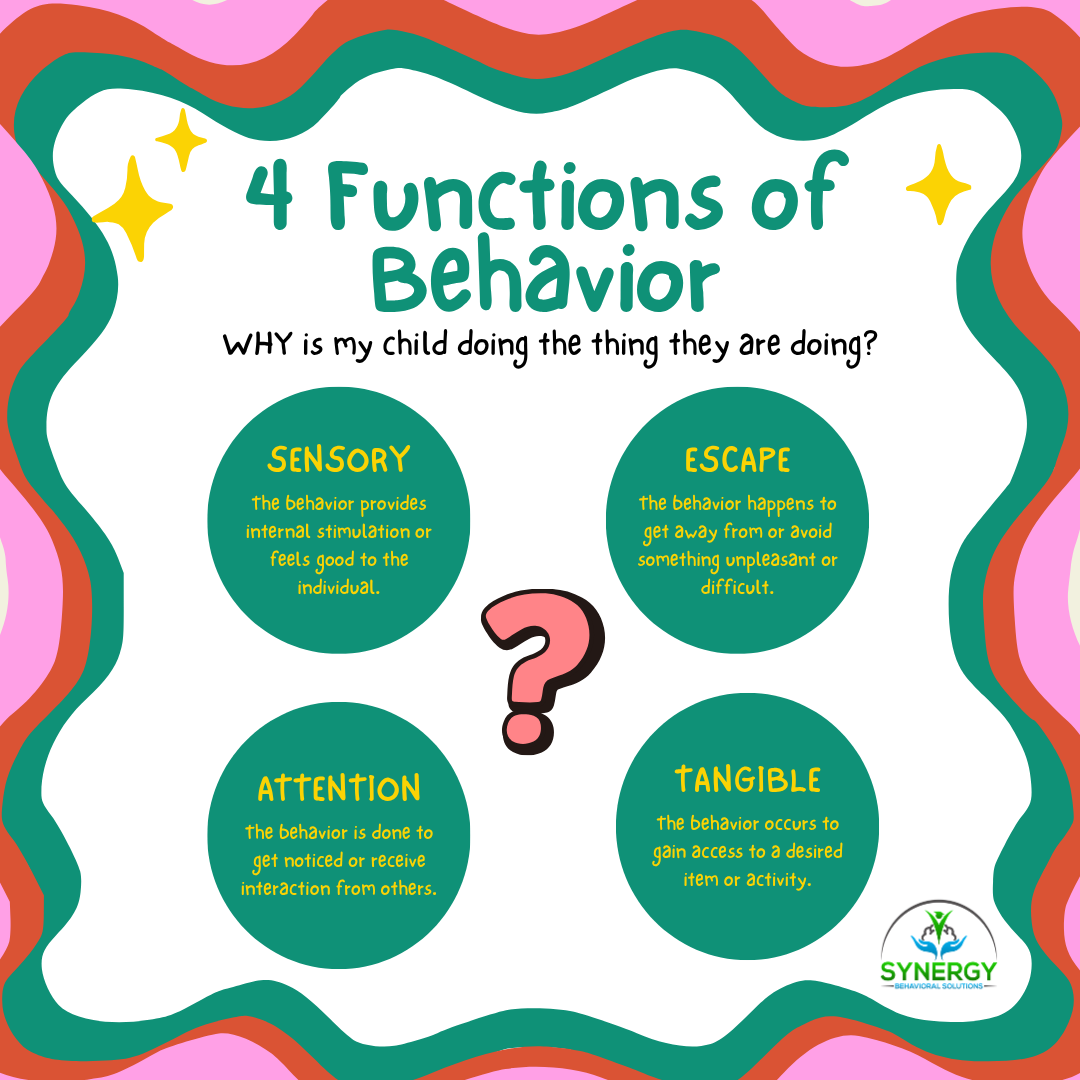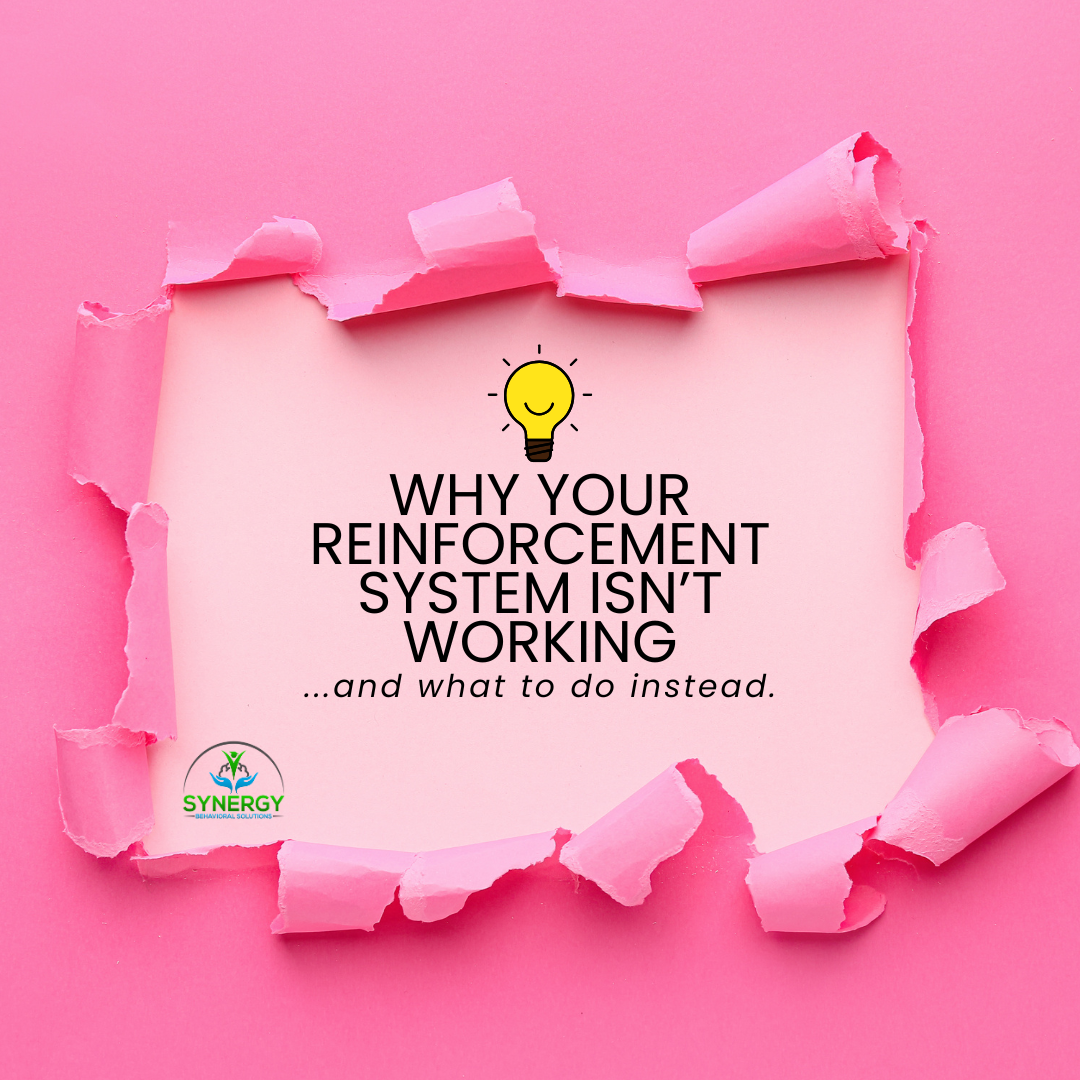Understanding the “Why” Behind Behavior: The 4 Functions Every Parent Should Know

At Synergy Behavioral Solutions, we believe that all behavior is communication — even the challenging ones. Whether your child is throwing a tantrum, refusing a task, or repeating certain movements, there’s always a reason behind it. Understanding that “why” is the first step toward meaningful change and growth.
In Applied Behavior Analysis (ABA), we look at behaviors through the lens of four main functions: Escape, Tangibles, Attention, and Sensory.
Let’s break these down in simple terms so you can start to see your child’s actions in a new light.
1. Escape — “I don’t want to do this!”
Sometimes children engage in behaviors to avoid or get away from something they find unpleasant or hard — like homework, chores, or a social situation. For example, a child might cry or refuse to follow directions when it’s time to clean up toys because the task feels overwhelming or boring.
💡 Parent Tip: Break tasks into smaller steps, offer choices, and praise effort — not just completion. This helps your child feel more in control and less likely to avoid the activity.
2. Tangibles — “I want that!”
This type of behavior happens when a child wants access to a specific item or activity — like a favorite toy, iPad, or snack. If a child learns that whining or hitting leads to getting what they want, that behavior is more likely to continue.
💡 Parent Tip: Teach your child how to ask appropriately for what they want. Reinforce requests made with words or gestures instead of problem behavior.
3. Attention — “Look at me!”
We all crave connection, and kids are no different. Sometimes behaviors happen to gain attention from parents, teachers, or peers — even if it’s negative attention. Yelling, laughing, or rushing over during a meltdown can unintentionally reinforce the behavior.
💡 Parent Tip: Provide frequent, positive attention throughout the day for good choices. When your child feels noticed for doing well, they’re less likely to act out to get your attention.
4. Sensory — “This feels good.”
Some behaviors occur because they are internally rewarding — they just feel good or help your child regulate their body. Examples include hand flapping, humming, rocking, or chewing on objects. These behaviors don’t rely on outside reactions or rewards.
💡 Parent Tip: Sensory behaviors often serve an important purpose. Instead of stopping them completely, try providing appropriate alternatives (like fidgets, chewy necklaces, or movement breaks).
Putting It All Together
When we understand why a behavior happens, we can replace it with something more positive and functional. That’s the heart of what we do at Synergy Behavioral Solutions — helping families find calm, connection, and confidence through understanding and evidence-based strategies.
Remember: Your child’s behavior is not random — it’s communication. When we listen, we can respond with compassion and create real, lasting change.
Want to learn more?
Our BCBAs provide personalized parent training and home-based ABA support designed to empower you with the tools to respond effectively and help your child thrive.



